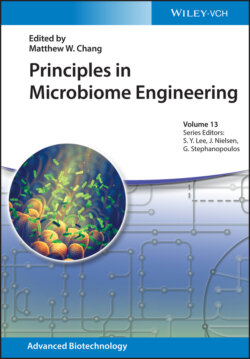Читать книгу Principles in Microbiome Engineering - Группа авторов - Страница 50
1.3.5.3 Non‐alcoholic Fatty Liver Disease (NAFLD)
ОглавлениеNAFLD is a metabolic disorder that results from the build‐up of liver fat in patients without a history of impaired liver function from heavy drinking, viral infections, or other liver diseases [279, 280]. NAFLD is the most common liver disease globally, with the number of patients increasing annually. Studies have found that the prevalence of NAFLD is linked to gut microbiota, where patients with liver failure often observe microbial overgrowth of small intestinal and are used as an indicator to determine the liver failure severity [281]. As discussed earlier, the ratio of Firmicutes/Bacteroides affects the host insulin resistance. On top of that, the ratio affects increasing endogenous ethanol production and inducing choline deficiency in the host increasing the risk of NAFLD development [282]. Ethanol produced by the microbiota increases intestinal mucosal permeability that coupled with choline deficiency, triggers the toll‐like receptors, which stimulate hepatocytes to produce plentiful cytokines involved in NAFLD pathogenesis [283].
Prebiotics and lactulose are commonly used to treat NAFLD enriching the Bifidobacterium abundance. Other prebiotics from the inulin‐type fructose fed to NAFLD animal models were shown to reduce the development of hepatic steatosis. These oligofructoses reduce fatty acid synthesis, promote weight loss by regulating intestinal polypeptides, reducing inflammation and proinflammatory cytokines, improving blood sugar regulation, and regulating intestinal microbiota [281, 284].
